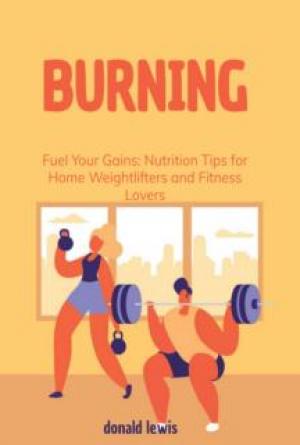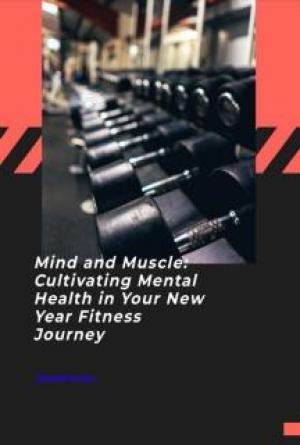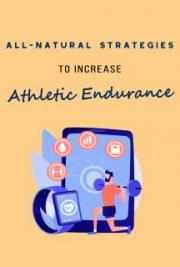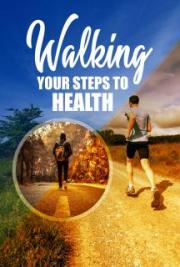It has been found that
diverticulitis affects mostly elderly individuals in Western countries.
Diverticulosis is the condition preceding this disease. Small pouches are
formed in the lining of the colon. If these pouches called diverticula become
inflamed or infected, the person has diverticulitis. The symptoms vary, but
usually include abdominal pain, nausea, constipation or diarrhea. Usually,
antibiotic treatment is prescribed and it is typically accompanied by a diet.
The diverticulitis diet which
accompanies the treatment of the condition includes only liquids. That way, the
inflamed pouches in the lining of the colon can heal properly. Water, broth and
fruit juices with pulp are the main components of this liquid diet. It is used for
a fairly short time so you should not worry about digestive complications.
Furthermore, you will get sufficient amounts of nutrients with these liquids.
Other components of the diet may include ice pops typically with small pieces
of fruit, tea without added cream and gelatin.
Low-fiber foods are included in
the diverticulitis diet once the condition of the patient improves. You will be
able to eat meat, poultry, fish, eggs and dairy products in amounts recommended
by your doctor. Other low-fiber foods which are typically included are breads,
pasta and noodles made from white flour and white rice. Some canned or cooked
vegetables such as green peas and potatoes may be allowed. You may be able to
eat canned or cooked fruits without the skin and seeds.
There is sufficient scientific
evidence to believe that diet low in fiber is the main cause of Diverticulosis
and consequently of Diverticulitis. That is why, after the inflamed diverticula
have been fully healed, patients diagnosed with these conditions should go on a
high fiber diet. This is necessary to prevent the recurrence of diverticulitis.
Patients must consume between
25 and 35 grams of fiber daily. The best sources of fiber are whole grains,
legumes, vegetables and fruits. You should include whole grain bread, pasta and
cereals in your diet. Beans are among the legumes with highest fiber content so
it is best to eat them more often. Potatoes, squash, peas, spinach, apples,
pears and prunes are among the vegetables and fruits richest in fiber. They
should be present on your table.
The best long term diet for
diverticulitis is the one that is rich in fiber and that is well balanced.
Consult a dietician who can advise you on the optimal daily amounts of
fiber-rich foods that you should consume. Make sure that you limit your
consumption of foods which may affect digestion adversely.
Which Diet is Best for Heart Health?
The sad fact is that heart
disease is the major cause of death in most of the developed countries in the
world. What leads to poor heart health and more serious problems? Genes can be
blamed, but the major culprits are sedentary lifestyle and unhealthy diet which
lead to high blood pressure and high cholesterol and eventually to heart
attack, stroke and diabetes type 2. It is important to adopt a diet for good
heart health irrespective of your age, gender and lifestyle. It is easy to keep
and the benefits are really great.
The best diet for heart health
is comprehensive and diverse. You need large amounts of vegetables and fruits.
They are all good for heart health. You should not worry about the fact that
fruits contain sugar. Bananas, apples, apricots, berries and citrus fruits are
extremely beneficial for the cardiovascular system. Experts recommend that you
include veggies and fruits of various colors in your diet for best results.
Whole grains are really
important for heart health as they help prevent insulin spikes and allow for
the more effective absorption of nutrients. You can go for all kinds of whole
grain foods from bread and cereals to pasta. Lean protein should be an
important component of your diet as well since it helps all organs and systems
in the body work properly. The best sources of protein are lean veal, chicken
and turkey breasts and fish. Beans are also great because apart from providing
protein they are rich in antioxidants too.
Low-fat dairy products should
be consumed as part of the diet for heart health as they are the main source of
calcium, which is needed by the body. It is best to go for skimmed milk and
yogurt. Feta cheese is also a good choice. You should stay away from fatty
cheese products.
The omega-3 fatty acids are essential
for heart health. You should consume all the foods that contain them. These
include fatty fish like salmon, mackerel and tuna, sardines and various nuts
and seeds
The diet for heart health
excludes fatty, salty and sugary foods. Keep your fat consumption to the very
possible minimum. You should consume no more than 2.3 to 2.4 grams of salt per
day. Make sure that you check food labels and use salt sparingly for flavoring
your dishes. Reduce your consumption of sugar to the very minimum.
In order to make the most out
of your diet for heart heath, you need to reduce your alcohol consumption to
the minimum and avoid sugary drinks. Make sure that you get cardio exercises
daily.
Which Diet is Best for Teenagers?
Many teenagers, and especially
girls, want to copy the looks of models and other celebrities and as a result,
they often go on diets which are not healthy for them. The reality is that
teens require many more calories on a daily basis than adults do because their
bodies are still developing. They need more nutrients as well. You can use this
guide to find out how to help your teens eat a healthy and balanced diet that
will help them stay fit and look great.
Check the optimal calorie
intake for your teens based on their gender. Indeed, there are different
requirements for boys and girls. Girls that are aged 14 to 18 need between
1,800 and 2,400 calories daily. Boys in this age group require between 2,000
and 3,200 calories per day. The best way to decide on the optimal amount of
calories for your child is to consider the growth level, overall healthy and
level of physical activity. You may want to consult your doctor as well.
The best diet for teenagers is
designed to provide them with the optimal amounts of nutrients which they need
to grow and stay fit and full of energy. 10 to 30 per cent of their daily
calorie intake should come from protein. Foods which contain lean protein
include chicken and turkey breasts and lean veal. Tofu and beans are the main
sources of plant protein.
45 to 65 of the daily calorie
intake of teens should come from carbohydrates. There are various sources of
healthy carbs. Whole grain foods are highly recommended. Kids can also eat
cereals, pasta and white rice, but it is a good idea to keep a check on these. Vegetables,
fruits and legumes can provide good amounts of healthy carbohydrates as well.
The amount of fat consumed by
teenagers as part of their diet should account for 25 to 35 per cent of their
daily calorie intake. Olive oil and avocados are among the healthiest sources
of fat which you should certainly include in the diet of your teen. In general,
kids should consume dairy products which contain small amounts of fat as well.
It is perfectly fine for
teenagers to consume sugary foods and drinks from time to time, but this should
not be done on a daily basis. It is your responsibility as a parent to explain
the dangers of sugar, processed and refined foods. Generally, it is best for
the teenager to just follow the example of their parents. That is why it makes
sense to cook healthy food for the whole family and to have only healthy food
items in your kitchen.
Which Diet is Best to Prevent Cancer?
You would certainly want to
know whether diet can help prevent cancer. The reality is that the causes of
most types of cancer are unknown. Hence, it is still impossible for scientists
to come up with preventive treatments. However, certain substances found in
food are known to cause damage to the organs, tissues and cells of the body and
to affect adversely their functioning. There are also foods which promote
overall good health.
It can be safely said that the
right kind of diet may lower your risk of certain types of cancer. Of course,
you have to keep in mind that no one is perfectly safe from this
life-threatening disease and that no diet or supplement for that matter can
guarantee you total protection. The best thing you can do is consume foods that
are beneficial for your body and avoid ones that have harmful effects.
Consume antioxidant-rich foods
as part of your diet for cancer prevention. Antioxidants fight free radicals
which damage healthy cells and may increase the risk of cancer. Most fruits and
vegetables contain considerable amounts of different types of antioxidants.
Berries and blueberries, in particular, are known to be among the most
antioxidant-rich foods. The citrus fruits are excellent sources of vitamin C,
which is among the most powerful antioxidants. Tomatoes, broccoli, cabbage and
carrots also contain chemical compounds of this type. Nuts and seeds are rich
in vitamin E, which is also a potent antioxidant.
Your anti-cancer diet should
contain foods rich in folic acid, calcium and vitamin D. Folic acid has been
found to provide universal protection from all types of cancer. It is found in
good amounts in dark leafy greens and spinach, in particular, and in citrus
fruits. Calcium and vitamin D, on the other hand, may help lower the risk of
colon cancer. Low-fat dairy products and dark leafy greens are the best sources
of calcium. Vitamin D is found in good amounts in salmon, sardines, egg yolk
and chicken liver.
The total amount of fat you
consume per day should not exceed 35 per cent of your calorie intake. It is
best if it is below 20 per cent. It is essential for you to avoid fatty foods
and especially ones containing saturated fats. Taking these measures should
lower your risk of cancers of the digestive system like stomach cancer and
liver cancer.
There are some general rules to
follow as part of your anti-cancer diet. Most of your food should be from plant
sources. Limit your consumption of foods from animal sources.
Why Dieting May not be the Answer
Nearly half of the people in
the US alone face the problem of obesity because of a number of reasons. Today,
people have a fast lifestyle that leaves little time for exercise and coupled
with a dietary intake that is full of colas and burgers this makes a sure shot
recipe for disaster.
There are overweight people
everywhere. This reflects the culture of consumerism and materialism that we
are living in. However, what is good to see is that most people are making
conscious efforts to get back into shape by trying to lose weight. We are in the
midst of a gym culture with many people working out hard while there are
millions doing things using the other common method - sticking to diet plans to
lose weight. But is avoiding certain foods and including few others in your
daily diet the right answer to the problem of obesity? Let us find out.
People have been dieting for
quite some time but the number of obese individuals has not fallen
The fact that emerges after
taking a hard look at the number of people resorting to dieting is that as the
number of people on a diet increases, so does the number of obese people. What
does this indicate? It simply tells us that all those diets that claim to help
people reduce their weight do actually achieve their goals but only for as long
as the people are following the diet. The high protein diet that is also a low
carbohydrate diet does not ensure that people will continue to remain in shape
after giving up on this diet. There is no evidence to support the claim of long
term weight loss made by several diets popular on the internet.
To make the matter worse, low
carb diets virtually eliminate the normally healthy food items such as fresh
fruits and whole grains. Vegetables and milk are also denied to those on a
crash diet making less energy available to cause weight reduction. No diet can
tell you how to avoid gaining weight once you are done with the diet. This is
the reason why there are 54 million American adults on this or the other diet
trying to maintain or lose some weight and yet the number of people who are
obese is at an all time high. What does this startling fact tell you? It tells
you that if dieting was so effective, most of the people should have been lean
and not obese today. Although there is no doubt that diet does help for losing
weight fast only about 10% are able to maintain this reduced weight while the
remaining 90% gain weight to become obese again.
Slowed metabolism is what
causes fat loss
What happens in the case of
diets that are restrictive in nature is that they lower the pace of the
metabolism of the person. The body goes into a conservation mode consuming
little resources. This does lead to weight loss but it is also a threat to the
health of the individual. There are threats like anemia and poor immune system.
These are usually a result of poor nutrition. Even the best of diets cause your
body to burn more calories than you can eat. This is the main reason why your
body is forced to shed fat.
If one were to look into the
reasons why diets are not a permanent solution to weight loss, they would see
that these diet plans are too hard to keep following for a long time. Can you
stay on spinach or cabbage soup twice a day as your food for any length of
time? This will certainly get a few pounds off your body but it will never
teach you how to change your eating habit to stick to this diet. Also, sticking
to a diet is difficult because of the counting of calories, avoiding
carbohydrates and choosing good fat over bad fat. It all begins with a lot of
excitement and thrill but becomes a pain in the neck and one starts to feel as
if he is being punished. It happens that one continues with a particular diet
as long as he can keep up his motivation levels and then drops it to gain
weight again.
Holiday Dieting Remedies
The holidays are here, or soon
will be and you are on a diet. There's a very good chance that the temptation
to binge on some of the foods on your taboo list will be within easy reach. How
will you handle it?
Holiday dieting can be the
hardest time to stayed focused especially since there are so many of them.
Besides the common ones like Thanksgiving, Christmas and Easter, if you
celebrate them, most people forget the various other celebrations like the
sporting events, weddings, baby showers, birthdays and the like. Something can
be celebrated almost every weekend. What is one to do?
While every intention is to
stay on course with the dieting program, sometimes it may not be so easy as
social pressures mount. Here are some suggestions to keep you from getting the
holiday dieting blues.
Look at your dieting program as
a continuing journey and not as an instant destination. If one of the meals
exceeds your calorie allowance, look at the next meal and adjust it
accordingly. Remember, most people get those holiday dieting binges and the
ones that come out of it ahead realize that one meal won't completely sabotage
the entire program.
See the bigger picture. If you
look at your dieting schedule weekly instead of daily, then one bad meal isn't
going to be such a detriment if you have 30 or more meals in that week.
After a meal disaster, just get
back into the saddle and continue on your dieting journey again. Most people
give up because they feel they have failed and it's no use staying on the diet
any longer. The ones that succeed are the ones who move on and don't give up.
Some knowledge of calorie
amounts in foods can be very helpful. Find the foods that have lower calories
and remember them for your holiday dieting adventures. You will be able to eat
more of those lower calorie foods without feeling deprived.
Portion sizes can make a
tremendous difference in your success. In calorie dense foods, the size of the
portion consumed can amount to 1/3 or more of your daily intake.
There is a signal sent to the
brain from the stomach that says it is full or satisfied. This satiety message
takes approximately 20 minutes to reach the brain. To decrease the calories
consumed in that meal, eat slower. Try chewing your food longer and taking a
short break between mouthfuls as that will waste some time to get within that
20 minute window of opportunity.
Drinking water can be very
helpful in keeping the diet on course. If you drink water before a meal, your
stomach will have something in it and produce a somewhat satisfied feeling.
This will help to cut down on the portion size of your meal. This suggestion
can work anytime you feel hungry. Interesting enough, sometimes the need for
water is disguised as a hungry feeling. So drinking water can not only help
your holiday dieting needs, but also anytime you have a craving for food.
The drinking of water also has
the benefit of having zero calories. Instead of having a sugar sweetened drink
or any alcoholic beverage, have water instead. Remember to look at the total
calorie intake taken in a one-week period of time. Water every day will help keep
that total amount within control if you tend to binge.
Eating snacks can push up the
calorie count in one day. Sometimes people will eat some snacks as a social
thing and not really for the hunger satiety. Be aware of this because it can be
very easy to consume a high amount of calories with just this action alone. If
you need to snack then hopefully there will be a vegetable platter close by.
Try eating celery. You can eat as much of it as you want because celery
requires so much work for the stomach to digest. This makes the calorie amount
negligible.
If holiday dieting is getting
you down, perhaps some of the suggestions mentioned can pick you up and give
that extra push to stay on track with your goals. Your success will come from
taking that continuing journey one step at a time to make your holiday and
dieting adventures a good one.
The Toughest Aspect of Dieting
The emotional and mental strain
of dieting has been felt by most people at some point in their lives. With
many, those extra few pounds accumulate to a point where they get fed up and
launch themselves into a dreaded DIET.
Many have asked what the
toughest aspect of dieting is. T







